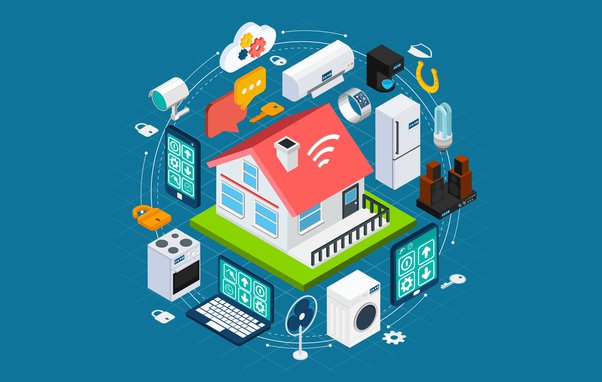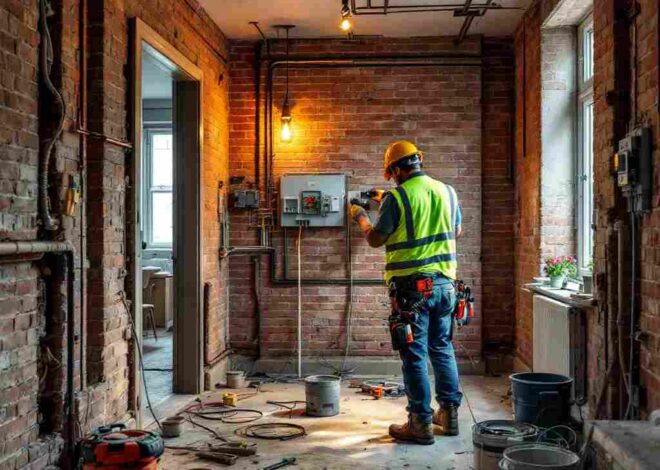
Best Home Automation Systems: A Comprehensive Guide
In today’s fast-paced world, the concept of home automation has gained significant traction, promising to make our lives easier and more convenient. From controlling lights and thermostats with a simple voice command to monitoring our homes remotely, the possibilities seem endless.
In this blog, we’ll take a deep dive into the world of home automation systems, exploring everything from the basics of how they work to the different types available on the market. Whether you’re a tech enthusiast eager to learn about the latest advancements or a homeowner considering implementing automation in your home, this guide has something for everyone.
So, let’s dive in and discover how home automation systems can revolutionize the way you live!
What Are Home Automation Systems?
Home automation systems are innovative technological solutions designed to automate and control various aspects of a home environment. These systems integrate smart devices, sensors, and communication protocols to enable users to remotely manage and monitor their homes.
At the core of home automation systems are central hubs or controllers that serve as the brain, connecting and coordinating the activities of different devices. These devices can include smart thermostats, lighting systems, security cameras, door locks, and appliances, among others.
By utilizing home automation systems, users can achieve a variety of benefits, including convenience, energy efficiency, enhanced security, and improved accessibility. With the ability to control and customize their home environment remotely, users can create personalized experiences tailored to their preferences and lifestyle.
Overall, home automation systems offer a modern and sophisticated approach to managing homes, providing users with greater comfort, efficiency, and peace of mind.
Key Components of Home Automation Systems
Home automation systems consist of several key components that work together to automate and control various aspects of a home:
Central Controllers and Hubs
These devices serve as the brain of the home automation system, allowing users to connect and control smart devices from a central location. Central controllers and hubs manage communication between devices and enable automation routines.
Sensors and Detectors
Sensors play a crucial role in home automation by detecting changes in the home environment, such as motion, temperature, and light levels. These sensors provide valuable data that can trigger automated actions, such as turning on lights or adjusting the thermostat.
Smart Devices and Appliances
Smart devices and appliances are the components of the home automation system that users interact with directly. These devices include smart thermostats, lighting systems, security cameras, door locks, and kitchen appliances, among others.
Integration Platforms and Protocols
Integration platforms and protocols facilitate communication between different devices within the home automation system. Common protocols include Wi-Fi, Zigbee, and Z-Wave, while integration platforms like IFTTT (If This, Then That) enable users to create custom automation routines across multiple devices.
By understanding these key components, you can build a comprehensive home automation system tailored to their needs and preferences.
Types of Home Automation Systems
Home automation systems come in various types, each offering unique features and functionalities:
Hub-Based Systems
Hub-based systems utilize a central hub or controller to connect and control smart devices throughout the home. Examples include systems like Samsung SmartThings and Hubitat. These systems often offer extensive compatibility with a wide range of devices and allow for advanced automation routines.
Cloud-Based Systems
Cloud-based systems rely on internet connectivity and cloud servers to manage and control smart devices. Platforms like Amazon Alexa and Google Home fall into this category. Users can control their devices remotely using smartphone apps or voice commands, with data processing and storage handled in the cloud.
Standalone Systems
Standalone systems consist of individual devices that operate independently without a central hub. Examples include smart thermostats like Nest and smart light bulbs like Philips Hue. While these systems may offer simplicity and flexibility, they may lack the advanced automation capabilities of hub-based systems.
Each type of home automation system has its advantages and limitations, so it’s essential to choose the one that best fits your needs and preferences.
Popular Home Automation Systems Comparison
Here’s a comparison of some popular home automation systems:
Amazon Alexa
- Features: Voice-controlled smart assistant, integrates with various smart home devices, supports routines and automation.
- Pros: Wide compatibility with smart devices, extensive third-party integrations, natural language processing.
- Cons: Limited functionality without additional compatible devices, privacy concerns with always-on listening.
Google Assistant
- Features: Voice-controlled smart assistant, integrates with Google ecosystem and smart home devices, supports routines and automation.
- Pros: Seamless integration with Google services, extensive device compatibility, natural language understanding.
- Cons: Privacy concerns, occasional connectivity issues, may not support all third-party devices.
Apple HomeKit
- Features: iOS-centric smart home platform, supports Apple devices and third-party HomeKit-compatible products, offers automation through the Home app.
- Pros: Strong emphasis on privacy and security, seamless integration with Apple ecosystem, easy setup and control through the Home app.
- Cons: Limited device compatibility compared to other platforms, requires Apple devices for control.
Samsung SmartThings
- Features: Centralized hub for controlling various smart home devices, supports a wide range of third-party devices, offers automation and routines.
- Pros: Broad compatibility with smart devices, versatile automation capabilities, user-friendly app interface.
- Cons: Occasional reliability issues, complex setup for some devices, may require frequent updates.
Hubitat Elevation
- Features: Localized home automation hub, supports Z-Wave and Zigbee devices, offers advanced customization and automation without relying on cloud services.
- Pros: High level of control and customization, no reliance on cloud servers for automation, strong privacy and security.
- Cons: Steeper learning curve, limited compatibility with some popular smart home devices, requires technical knowledge for setup and configuration.
Home Assistant
- Features: Open-source home automation platform, supports a wide range of devices and protocols, offers extensive customization and automation capabilities.
- Pros: Highly customizable and flexible, supports a vast number of devices and integrations, community-driven development.
- Cons: Requires technical expertise for setup and configuration, steep learning curve for beginners, frequent updates may require maintenance.
Each of these home automation systems has its own strengths and weaknesses. So, it’s important to consider your specific needs, preferences, and existing smart devices when choosing the right one for your home.
You may also read (cost of home improvement insurance)
Choosing the Right Home Automation System
Choosing the right home automation system involves several considerations to ensure it meets your needs:
Tip #1: Assess Your Needs and Requirements: Start by identifying your priorities and goals for home automation. Consider factors such as convenience, energy efficiency, security, and budget to determine what features are essential for you.
Tip #2: Compatibility Considerations: Ensure that the home automation system you choose is compatible with the devices you already own or plan to purchase. Check for compatibility with communication protocols like Wi-Fi, Zigbee, or Z-Wave to ensure seamless integration.
Tip #3: Scalability and Expandability: Choose a home automation system that allows for scalability and expandability as your needs evolve. Look for systems that support a wide range of devices and offer the flexibility to add or remove components as needed.
Tip #4: Budgeting and Cost Analysis: Consider the initial cost of purchasing the home automation system, as well as any additional devices or accessories you may need. Factor in installation costs and ongoing expenses like subscription fees or maintenance costs to determine the total cost of ownership.
By carefully evaluating these factors and choosing a home automation system that aligns with your needs and budget, you can create a smart home environment that enhances your lifestyle and improves your quality of life.
Installation and Setup Process
Embarking on the installation and setup process of your home automation system is an exciting endeavor that promises to enhance your living space. Below, we outline a straightforward guide to help you seamlessly integrate your devices and optimize their functionality:
Step 1: Planning and Preparation
Take a moment to envision how you want your home automation system to operate. Consider the placement of each device, ensuring they’re strategically positioned for optimal functionality. Gather all necessary components and tools before commencing the installation process.
Step 2: Follow the Installation Guide
Follow the manufacturer’s instructions meticulously to install each device within your home. This may involve mounting sensors, connecting devices to power sources, and configuring settings via a smartphone app or central hub. Take your time to ensure each device is properly installed and functioning as intended.
Step 3: Troubleshooting Common Issues
In the event of any challenges during the installation process, refer to the troubleshooting guide provided by the manufacturer. Common issues may include connectivity problems, difficulty pairing devices, or software glitches. Don’t hesitate to reach out to customer support for assistance, as they’re equipped to provide guidance and solutions to resolve any issues you may encounter.
In conclusion, home automation systems offer a wealth of benefits, from convenience and efficiency to enhanced security and sustainability.
By understanding the basics of how these systems work, exploring different types and components, and considering future trends, you can make informed decisions about implementing home automation in your own home. Whether you’re looking to streamline your daily routines, save energy, or simply enjoy the convenience of remote control, home automation has something to offer for everyone.
With the right planning, setup, and choice of system, you can create a smarter, more connected home environment that enhances your quality of life. Embrace the future of living and unlock the full potential of your home with home automation systems.
You may also read (in the uk which generator is best for home use)


